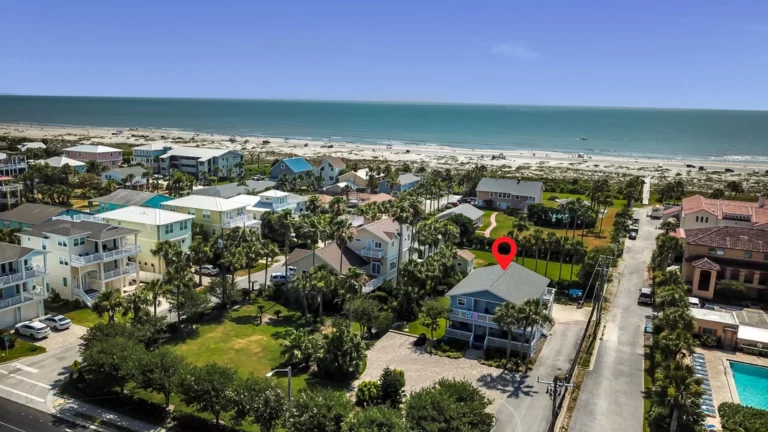In an increasingly competitive world, real estate professionals are always looking for a cutting-edge advantage. Enter real estate drone photography—a game-changer that’s revolutionizing the industry. Through the eye of a drone, properties come to life in ways traditional photography simply can’t achieve, offering new perspectives, highlighting unique features, and truly placing a property in its context. From commercial and residential properties to agricultural lands and government holdings, drone photography is redefining how we perceive and present real estate.
In this article, we will delve deep into the benefits of drone photography, explore different types, and help you navigate the process of getting started with your own drone photography venture. You’ll discover practical shooting tips, learn about the best drones for real estate photography, and even find answers to frequently asked questions about this burgeoning field.
Whether you’re a realtor looking to boost your marketing game, a drone enthusiast wanting to break into the real estate industry, or simply curious about the intersection of drones and real estate—this article has you covered. So, buckle up and let’s take flight into the dynamic world of real estate drone photography!
Benefits of Real Estate Drone Photography

Better Perspectives
One of the fundamental advantages of real estate drone photography is the ability to provide better perspectives. Traditional ground-level photography can’t compete with the unique, bird’s-eye views that drones offer. Drones can capture sweeping panoramas, highlight architectural features, and showcase the beauty of the property from angles otherwise impossible to achieve. This elevated viewpoint can significantly enhance the visual appeal of a property, creating compelling imagery that captures the attention of potential buyers.
Putting Property into Context
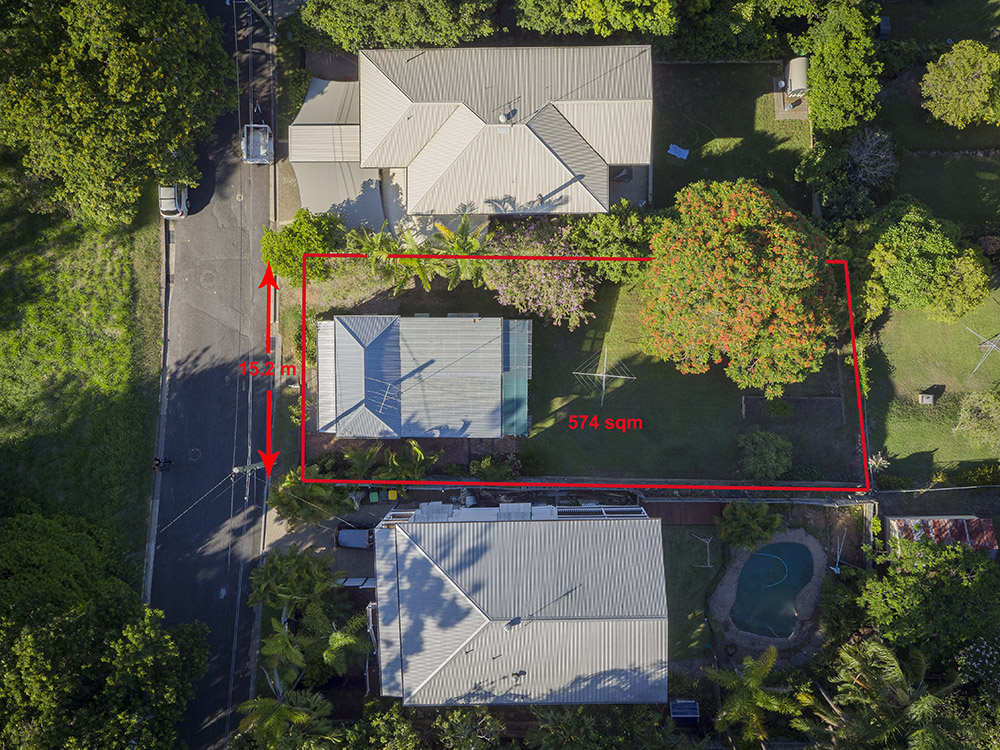
Drones excel at putting properties into context. They can easily show the property’s location relative to nearby amenities, roads, or landmarks. This can be especially beneficial when marketing properties with significant land acreage, waterfront locations, or those situated in desirable neighborhoods. With drone photography, potential buyers can truly understand where the property sits within its wider environment.
Showing Dimensions of the Property

A drone’s aerial perspective is a powerful tool for highlighting the scale and dimensions of a property. It can effortlessly illustrate the layout of a home, showing how the house sits on the plot, the size of the yard, and the positioning of additional features like pools or outbuildings. This comprehensive view provides a clear sense of scale that can be difficult to convey through traditional photography.
Highlighting Inaccessible Features
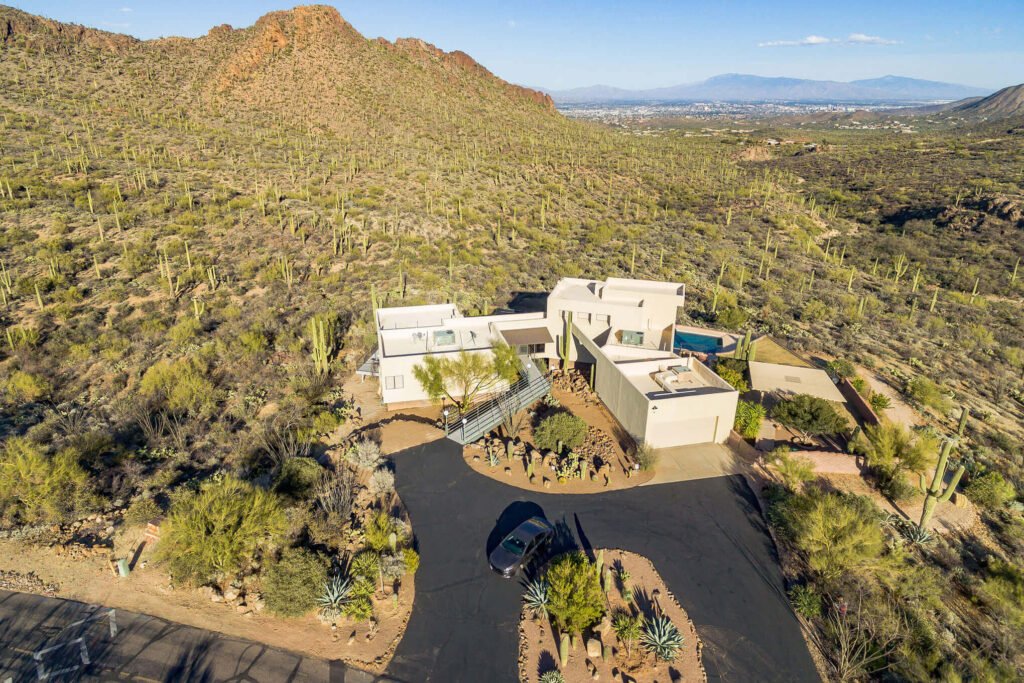
With their ability to fly and hover at different heights and angles, drones can highlight features that might otherwise be inaccessible or challenging to photograph. For instance, a drone can easily capture the condition of a roof, the intricacy of a unique architectural feature, or a beautiful view that the property overlooks. These detailed images can give potential buyers a more complete understanding of all that the property has to offer.
Higher Conversion Rate When Selling

High-quality drone photography can significantly increase the attractiveness of a property listing, leading to a higher conversion rate when selling. According to MLS statistics, properties with aerial images sold 68% faster than properties with standard images. In an industry where first impressions are vital, the captivating visuals provided by drone photography can make a property stand out from the competition.
Enhanced Virtual Tours
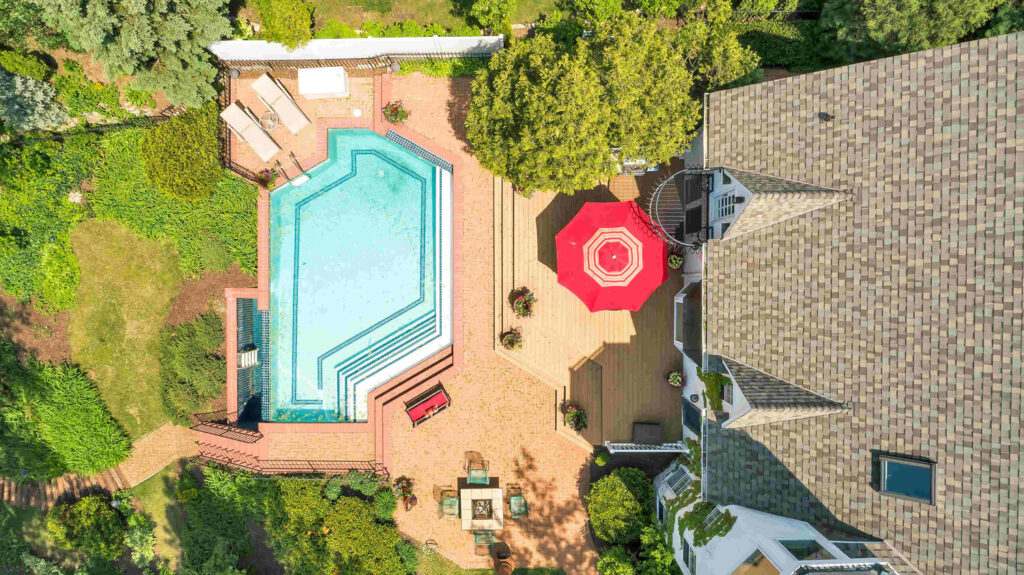
In today’s digital age, virtual tours have become an expected part of property listings. Drones can contribute to these by providing smooth, cinematic footage that can be used to create immersive, 360-degree virtual tours. These tours allow potential buyers to explore a property at their own pace, getting a feel for the space before they ever set foot in it.
Cost-Effective Marketing Solution

While the up-front investment in a drone and associated equipment might seem steep, drone photography can be a remarkably cost-effective marketing solution in the long run. The high-quality imagery it provides can be used across multiple platforms, from property listings to social media to print marketing materials. This means each image can reach a broader audience, providing more value for the investment.
Types of Real Estate Drone Photography
Real estate drone photography isn’t limited to one kind of property or purpose. With the ability to capture distinctive perspectives and high-resolution images, drones can provide valuable insights and marketing material across various real estate sectors. Let’s explore some of the key areas where drone photography is making a significant impact.
Commercial

Commercial properties, due to their larger size and complex infrastructure, often benefit significantly from drone photography. Aerial images can effectively capture the scale of commercial buildings, shopping centers, office parks, and industrial properties. These images can be used in marketing materials to attract potential tenants or investors, giving them a comprehensive view of the property’s features, size, and location.
Residential

In the residential sector, drone photography is increasingly becoming a standard part of property listings. Drones can capture unique angles of homes, gardens, and the surrounding neighborhood, providing potential buyers with a better understanding of the property. From showcasing a backyard pool to the proximity to local parks, drone photography can highlight aspects that make a residential property appealing.
Agricultural

For agricultural properties such as farms, ranches, or vineyards, drone photography can be particularly beneficial. Drones can cover large areas quickly, providing images or video that showcase the breadth and diversity of the land. This can be useful not only for selling properties but also for monitoring crop health, irrigation systems, and livestock.
Government
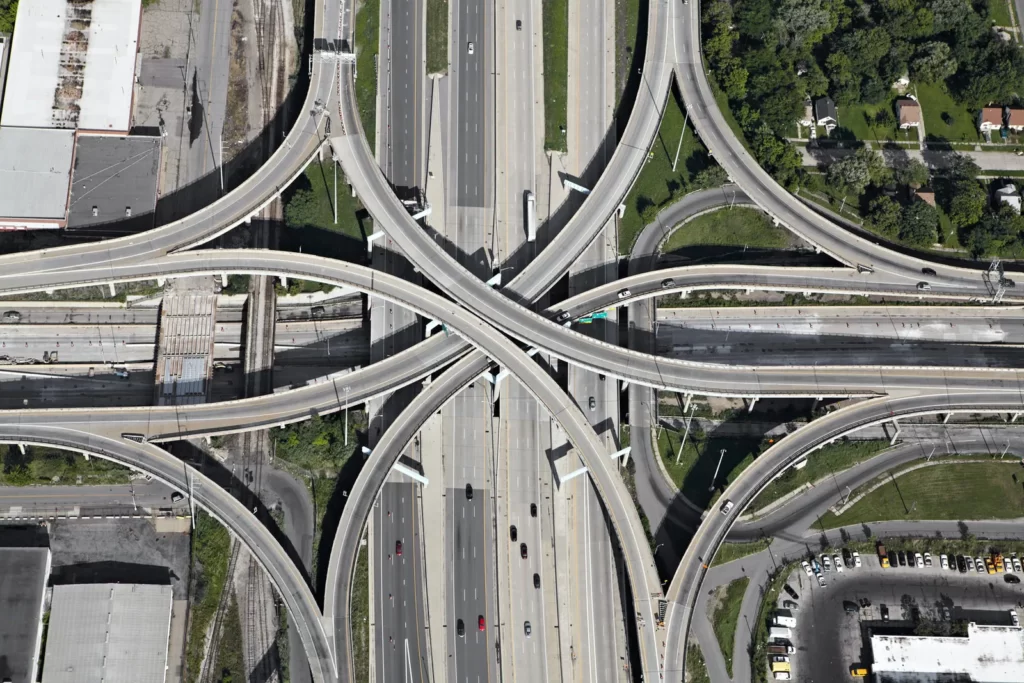
Government agencies are also leveraging drone photography for a variety of purposes. This can include surveying public lands, documenting construction progress on government projects, or marketing public properties for sale or lease. The aerial perspective provided by drones can be a valuable tool for efficient land management and oversight.
Vacation and Resort

Vacation homes and resort properties often come with beautiful surroundings that can be effectively captured with drone photography. Aerial images can showcase proximity to beaches, lakes, ski slopes, golf courses, or other attractions. This not only enhances the appeal of the property but also gives potential renters or buyers a taste of the lifestyle the property offers.
How To Shoot Real Estate Drone Photography
Embarking on a journey into drone photography can be incredibly rewarding. However, it requires more than just buying a drone and starting to shoot. This section will guide you through the critical steps you need to take to become a professional real estate drone photographer.
Get Your Drone Pilot License

Before you can begin, it’s crucial to understand the legal requirements for flying a drone commercially. In many countries, including the United States, you’re required to hold a drone pilot license for commercial use. This involves passing an FAA-approved aeronautical knowledge test, commonly referred to as the Part 107 test. Studying for and obtaining this license will ensure you understand the rules and regulations associated with flying a drone, including where you can fly, how high, and how to do so safely.
Purchase Your Drone With A Camera
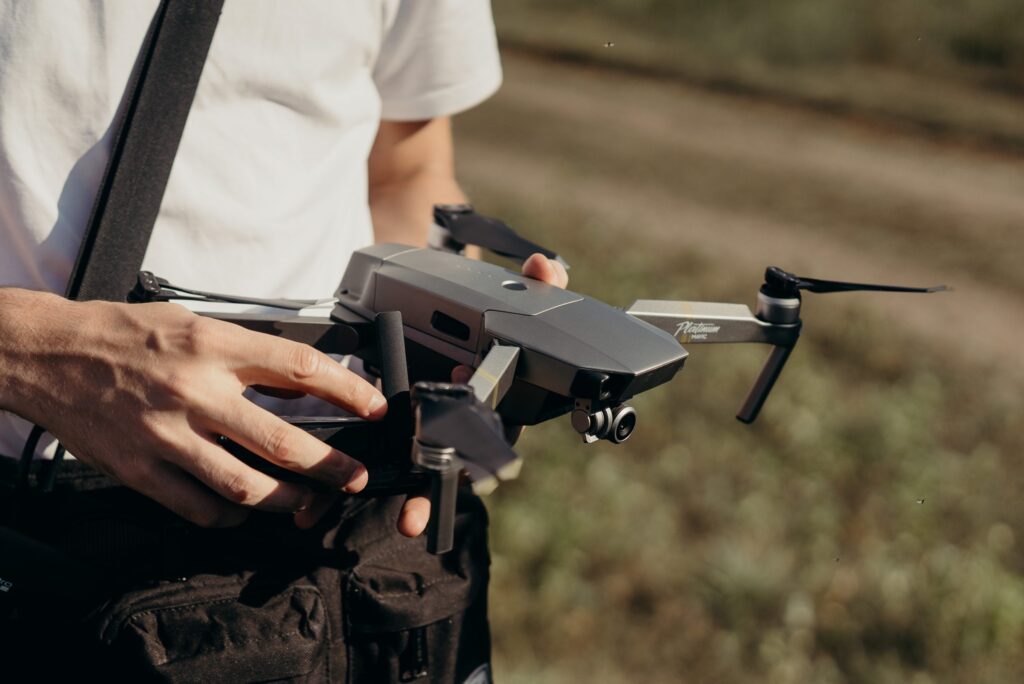
Selecting the right drone is a crucial step. The drone market is vast, with numerous options varying in price, size, capabilities, and quality. For real estate photography, a drone with a high-quality camera is essential. Look for drones that offer high-resolution imagery, good color accuracy, and a wide dynamic range. Some popular choices among professionals include models from DJI, such as the Phantom or Mavic series.
Get Additional Accessories
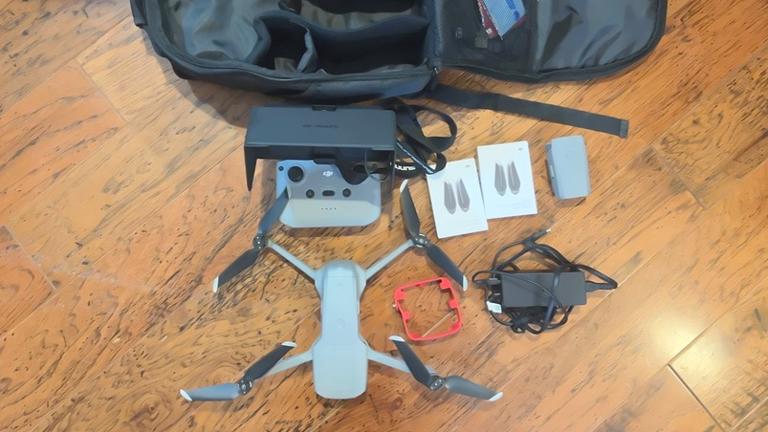
In addition to your drone and camera, there are several accessories that can enhance your drone photography experience. Extra batteries are a must, as most drone batteries only last for 20-30 minutes. A carrying case can help protect your equipment during transport. You might also consider investing in ND filters to help control exposure on bright days, additional memory cards to ensure you don’t run out of storage, and a quality drone landing pad for safe takeoffs and landings.
Capturing Real Estate With A Drone

Once you’re equipped and ready to fly, it’s time to start capturing properties. Here are a few tips:
- Pre-Flight Planning: Before launching your drone, do a pre-flight check to ensure all equipment is functioning properly. Check the weather forecast, be aware of any flight restrictions in the area, and have a flight plan in mind.
- Shooting Techniques: Mastering a few key shooting techniques can greatly enhance your footage. These include the orbit shot (circling around the property), the reveal shot (starting low and then rising to reveal the property), and the top-down shot (looking straight down at the property).
- Lighting: Like all photography, lighting is key in drone photography. The golden hours (shortly after sunrise and before sunset) often provide the most flattering light.
- Composition: Pay attention to the composition of your shots. Try to include points of interest, use leading lines, and consider the rule of thirds to create visually appealing images.
Becoming proficient at real estate drone photography requires practice and patience. Start by experimenting with different techniques and settings, and over time, you’ll develop your unique style and skills.
Tips For Real Estate Drone Photography
Mastering real estate drone photography involves more than just knowing how to fly a drone. It requires a deep understanding of photography principles, careful planning, and post-production skills. Here are some pro-tips to guide you through the process.
Stage the House

Before you begin shooting, ensure that the property looks its best. This could involve tasks like cleaning the exterior of the house, mowing the lawn, or even arranging outdoor furniture. Staging the house effectively can significantly enhance the aesthetic appeal of your images. Remember, you’re not just selling a house; you’re selling a potential home.
Pro-tip: Ask the homeowners to remove any personal items or vehicles from the property for a cleaner shot.
Plan for Weather

Weather plays a critical role in drone photography. Clear, sunny days can provide excellent lighting, while overcast conditions can create a more diffused, softer light. However, flying in rain, snow, or high winds can be challenging and potentially damage your equipment.
Pro-tip: Always check the weather forecast before planning your shoots. Use a reliable weather app to stay updated on wind speeds, precipitation, and light conditions.
Time of Day

The time of day you choose to shoot can significantly impact the quality of your images. The ‘Golden Hour’ (just after sunrise or just before sunset) often offers the most flattering light, highlighting the property’s features and creating a warm, inviting atmosphere.
Pro-tip: Experiment with different times of day to capture varying moods and perspectives of the property.
Camera Settings
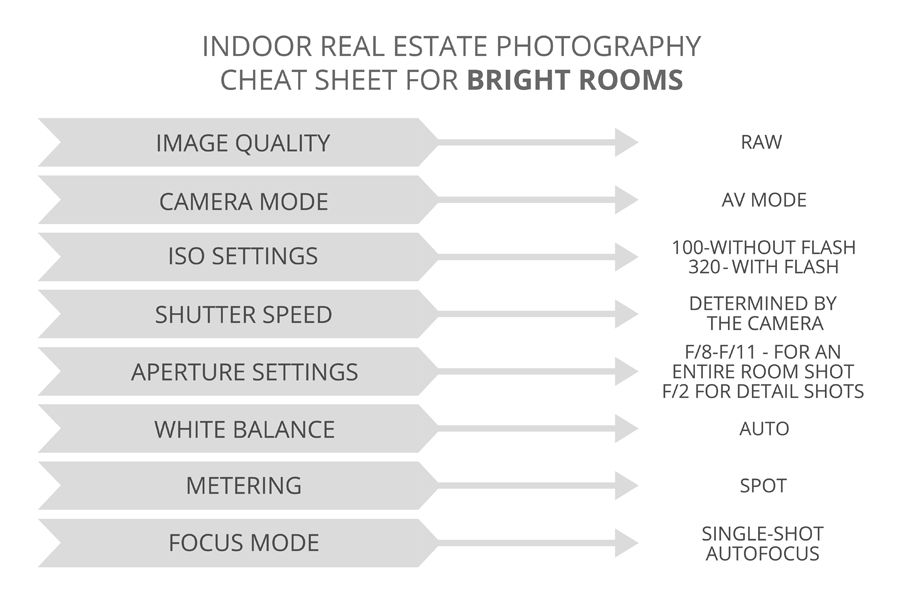
Understanding and effectively using your drone’s camera settings is essential for achieving high-quality images. This involves adjusting settings like ISO, shutter speed, aperture, and white balance to suit the lighting conditions.
Pro-tip: Use a low ISO for clear, noise-free images. Adjust the shutter speed and aperture based on the brightness of the scene. Use the auto white balance setting, or manually adjust it to match the color temperature of the light.
Plan Your Shots

Planning your shots in advance can help you capture the property from the best angles and avoid unnecessary retakes. This might involve scouting the property beforehand or using Google Maps to pre-plan your flight path.
Pro-tip: Try to capture a variety of shots, including wide shots of the entire property, closer shots of interesting features, and different angles to showcase the property’s surroundings.
Post-Processing
Post-processing is an important step in real estate drone photography. This involves editing your images to correct exposure, adjust colors, improve sharpness, and remove any unwanted elements.
Pro-tip: Use editing software like Adobe Lightroom or Photoshop. Don’t overdo the editing; the aim should be to enhance the images while keeping them looking natural.
Real Estate Photography Courses
Learning real estate photography, particularly with drones, can seem daunting. Thankfully, there are numerous online courses available that can help you master the craft. Here are a couple of popular choices:
1. Mastering Drone Photography for Real Estate by Udemy

This comprehensive course on Udemy is perfect for those looking to master drone photography for real estate. It covers everything from selecting the right drone and understanding camera settings to shooting techniques and post-processing. The course includes over 5 hours of on-demand video and offers a certificate of completion.
Price: $129.99 (though Udemy frequently offers discounts)
2. Real Estate Photography: How To Get Started by LinkedIn Learning

While this course does not exclusively focus on drone photography, it provides an excellent foundation for all aspects of real estate photography. It includes modules on understanding real estate photography, camera gear and settings, shooting interiors and exteriors, and post-processing. The course is led by Scott Hargis, a renowned real estate photographer.
Price: Free with a monthly LinkedIn Learning subscription ($29.99/month after a one-month free trial)
Both courses are self-paced, meaning you can take your time to understand and practice the concepts. They also offer the opportunity to interact with instructors and fellow students, providing additional support and feedback as you learn.
Remember, while these courses can provide you with valuable knowledge and techniques, the best way to improve your skills is by practicing regularly and experimenting with different styles and settings.
Choosing A Drone For Real Estate Photography
Choosing the right drone is critical to the success of your real estate photography venture. There are various factors to consider when making your choice, including camera quality, battery life, memory, flight modes, stabilization, flight range, and additional features. Let’s delve into each of these to help you make an informed decision.
Camera Quality

For real estate photography, a drone with a high-quality camera is essential. Look for a drone that can capture high-resolution images and videos, ideally in 4K. Pay attention to the sensor size, as a larger sensor can generally capture more light and detail.
Battery Life

The battery life of a drone can significantly impact your ability to capture the shots you need. Most drone batteries last between 20-30 minutes, so consider drones that offer longer flight times. Having extra batteries on hand is also advisable.
Memory

Consider the storage capacity of your drone. Shooting high-resolution images and video can quickly fill up storage space, so a drone with expandable memory or the ability to use SD cards can be beneficial.
Flight Modes
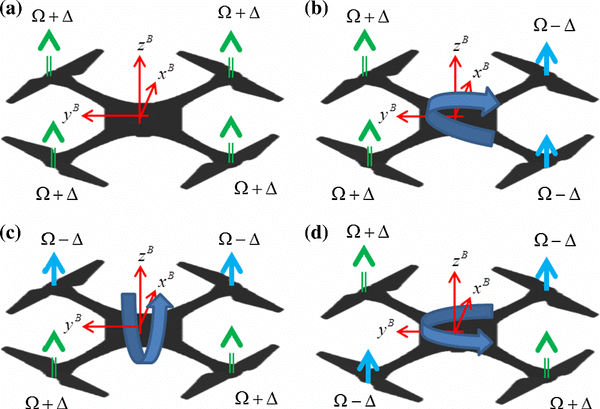
Different drones offer different flight modes, which can assist in capturing specific types of shots. Modes such as orbit, follow me, waypoint navigation, and point of interest can be particularly useful for real estate photography.
Stabilization
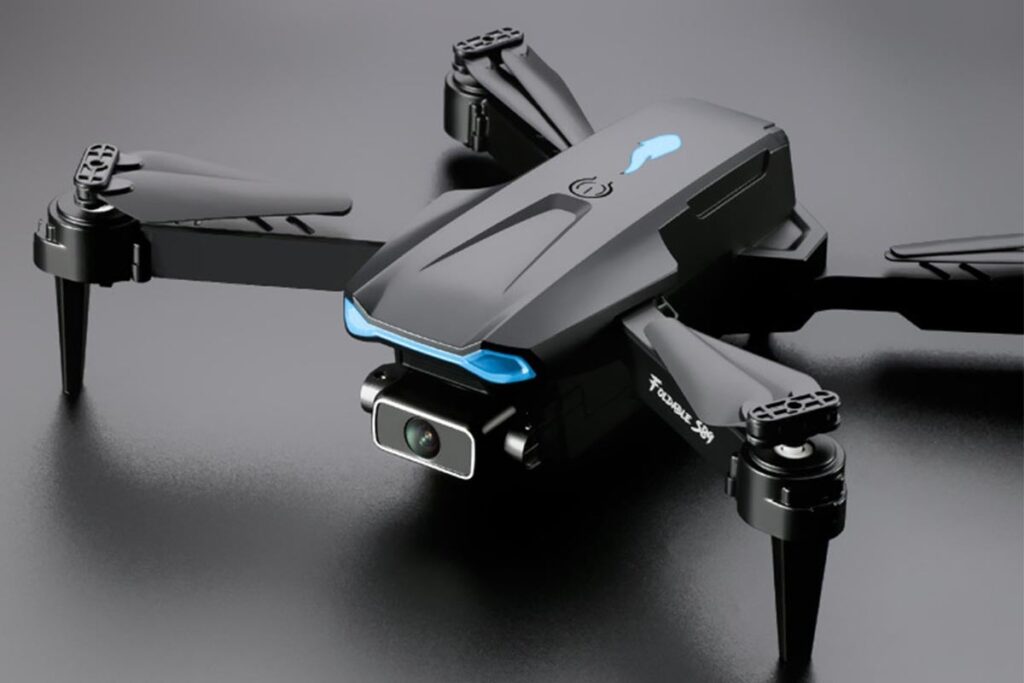
Image stabilization is crucial for capturing clear, steady footage. Look for drones that feature gimbal stabilization. A 3-axis gimbal is generally considered the best for keeping your camera steady during flight.
Flight Range

The range of your drone, or how far it can fly from the controller, may also be a factor to consider. While you’ll likely be within close proximity to the property you’re shooting, a larger range can give you more flexibility.
Additional Features
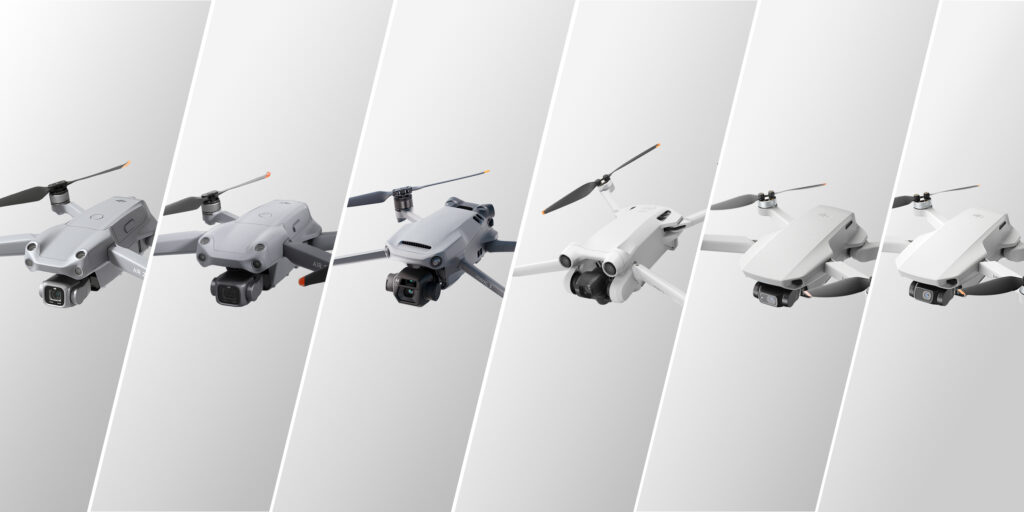
Additional features such as obstacle avoidance, automatic return home, and intelligent flight modes can make flying easier and safer, especially for beginners. Some drones also offer features specifically for photography, like bracketing for HDR images or RAW format support.
When choosing a drone for real estate photography, it’s important to consider all these factors and how they align with your needs and budget. Remember, the most expensive drone isn’t necessarily the best one for your needs. Research, read reviews, and consider renting a few different models to test before making a purchase.
FAQs
How much can you charge for drone photography?
The cost of drone photography services can vary greatly depending on factors like location, property size, and the specific requirements of the project. However, on average, drone photographers in the United States charge between $200 to $400 for a single property shoot, with more complex or commercial shoots potentially costing upwards of $500 to $1000.
Do I need a drone license for real estate drone photography?
Yes, in many countries, including the United States, you need a drone license to use a drone for commercial purposes, which includes real estate photography. In the U.S, you’re required to pass the Federal Aviation Administration’s (FAA) Part 107 test to obtain a Remote Pilot Certificate.
What is the FAA Part 107 test?
The FAA Part 107 test is a knowledge test administered by the Federal Aviation Administration (FAA) in the United States for those seeking to operate drones for commercial purposes. It covers topics such as airspace classifications, operating requirements, and flight restrictions, with the aim of ensuring the pilot understands the regulations and safety procedures for operating drones commercially.
How to get FAA licensed for real estate drone photography?
To get FAA licensed for real estate drone photography, you must first pass the FAA’s Part 107 test. After passing the test, you can apply for a Remote Pilot Certificate through the FAA’s online IACRA system, where you’ll complete an application and undergo a TSA background check before receiving your certificate.
How profitable is drone photography?
Drone photography can be quite profitable, with professionals charging several hundred dollars per session, and top-tier drone photographers earning upwards of $200,000 a year. However, profitability depends on various factors, including the photographer’s skill level, reputation, location, the specific market they serve, and the level of competition in their area.
Why do realtors use drones?
Realtors use drones to capture unique aerial perspectives of properties, offering potential buyers a comprehensive view of the property’s size, layout, and surroundings. This helps create engaging and compelling marketing materials, improving the property’s visibility and attractiveness to potential buyers, thus increasing the chances of a quicker and more profitable sale.
What is the best time of day for drone photography real estate?
The best time of day for drone photography in real estate is typically during the “Golden Hour,” which is the period shortly after sunrise or before sunset. During this time, the lighting is soft and warm, creating appealing shadows and depth, and enhancing the property’s aesthetic appeal in the images.
How do I get clients for my drone business?
Getting clients for your drone business involves effective marketing and networking. You can start by building a professional portfolio showcasing your best work, setting up a website and social media profiles, attending industry events, and reaching out to potential clients like real estate agencies, construction companies, and event planners. Additionally, word-of-mouth referrals from satisfied clients can significantly boost your clientele.
Conclusion

In conclusion, real estate drone photography is a burgeoning field that blends technological advancement with artistic expression. The ability to showcase properties from unique perspectives offers a competitive edge in the ever-evolving real estate market.
As a drone photographer, understanding the craft requires more than merely flying a drone; it calls for a deep understanding of photographic principles, a keen eye for detail, and a continuous passion for learning and adapting. The journey may seem daunting at first, but with the right equipment, proper training, and the tips outlined in this guide, you’ll be well on your way to capturing stunning aerial shots that not only impress your clients but also elevate your real estate marketing game.
Remember, every flight is an opportunity to learn, to create, and to redefine the way we perceive the world from above. Happy flying!

